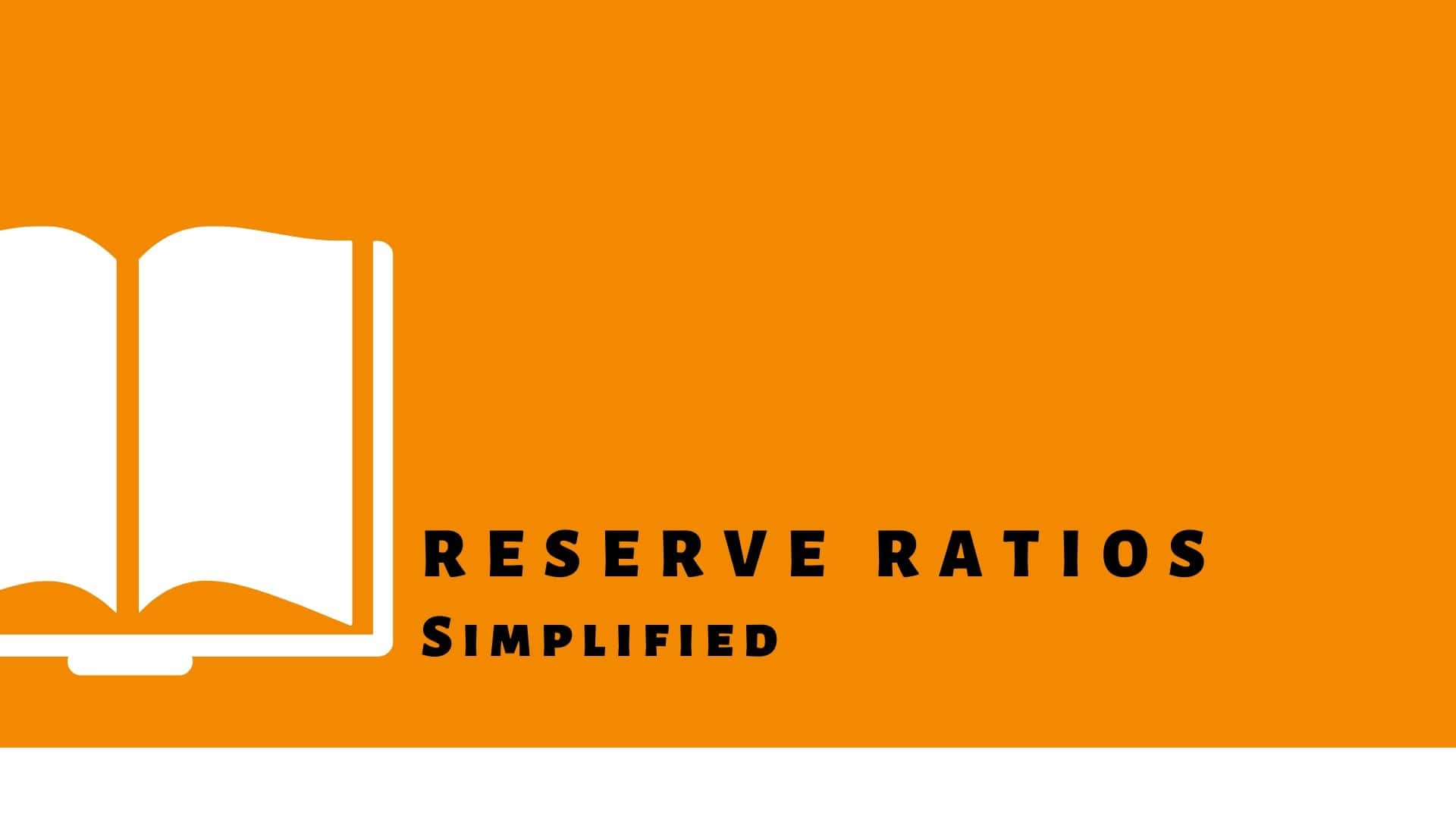
To understand the monetary policy administered by the Reserve Bank of India we must acquaint ourselves with a few important terminologies. Awareness of the below terminologies is a must for aspiring and serving bankers and for somebody who wants a better understanding of the economy. Let’s understand the reserve ratios.
CRR: Cash reserve ratio signifies the amount of the mandatory cash the banks must hold with themselves out of the total deposits they have to meet the daily requirements of its customers. This minimum ratio is mandated by the RBI depending on the liquidity position of the market.
To illustrate the point let’s say a Bank’s total deposit is Rs100, and if the cash reserve ratio is 4%, the banks will have to hold Rs. 4 with RBI and the bank will be able to use only Rs 96 for its lending and other investment activities. Therefore, higher the ratio, the lower is the usable cash with banks. The RBI makes use of this tool to control the circulation of money in the economy, thereby impacting inflation and growth.
Repo rate: This is the rate at which the Banks and Primary Dealers operating in India borrow money from the RBI. Under Repo, the Reserve Bank of India injects funds to organizations (SCBs and Primary Dealers) which have both current account and SGL account with the it.
Reverse Repo rate: This is exactly the opposite of the Repo transaction and is used for absorbing excess liquidity in the market. The reverse repo rate is the rate at which banks place their surplus funds with the RBI under the liquidity adjustment facility (LAF) introduced in June 2000. The Reverse Repo Rate at present is at 25 basis points below the repo rate. Reverse Repo facility is available to Primary Dealers also.
SLR: Every bank is required to maintain a minimum proportion of their Net Demand and Time Liabilities as liquid assets in the form of cash, gold and un-encumbered approved securities at the close of business every day. The ratio of these liquid assets to demand and time liabilities is known as Statutory Liquidity Ratio (SLR). RBI is empowered to increase this ratio up to 40%. An increase or decrease in SLR has a huge impact on the liquidity position of the economy.
Demand Liabilities – Demand liabilities are the ones that are payable on demand, for e.g. money in savings and current accounts, unclaimed deposits etc.
Time Liabilities – Time liabilities are the ones which are kept for a certain period of time, for e.g. fixed deposits, staff security deposits etc
Marginal standing facility: Under this facility, All Scheduled Commercial Banks having Current Account and SGL Account with Reserve Bank, Mumbai can avail funding for overnight, up to two percent of their respective Net Demand and Time Liabilities (NDTL).
Bank Rate: It’s defined as the standard rate at which the Reserve Bank is prepared to buy or re-discount bills of exchange or other commercial paper eligible for purchase under the Act. On introduction of LAF, discounting/rediscounting of bills of exchange by the Reserve Bank has been discontinued. As a result, the Bank Rate became dormant as an instrument of monetary management. It is now aligned to MSF rate and used for calculating penalty on default in the cash reserve ratio (CRR) and the statutory liquidity ratio (SLR). RBI charges bank rate for long-term loans.
Liquidity Adjustment Facility (LAF): Liquidity Adjustment Facility (LAF) was introduced under which the Reserve Bank would conduct auctions periodically. The Reserve Bank could reset its Repo and Reverse Repo rates which would in a sense provide a reasonable corridor for the call money market. While repo injects liquidity into the system, the Reverse repo absorbs the liquidity from the system. RBI makes a decision regarding Repo Rate on the basis of prevailing market conditions and relevant factors.



